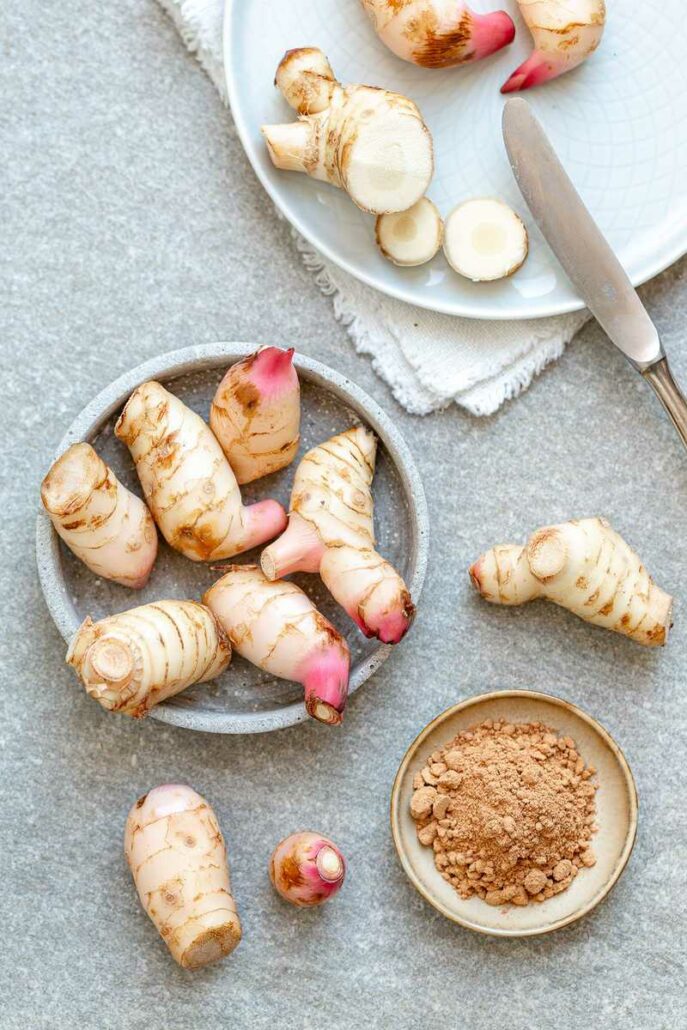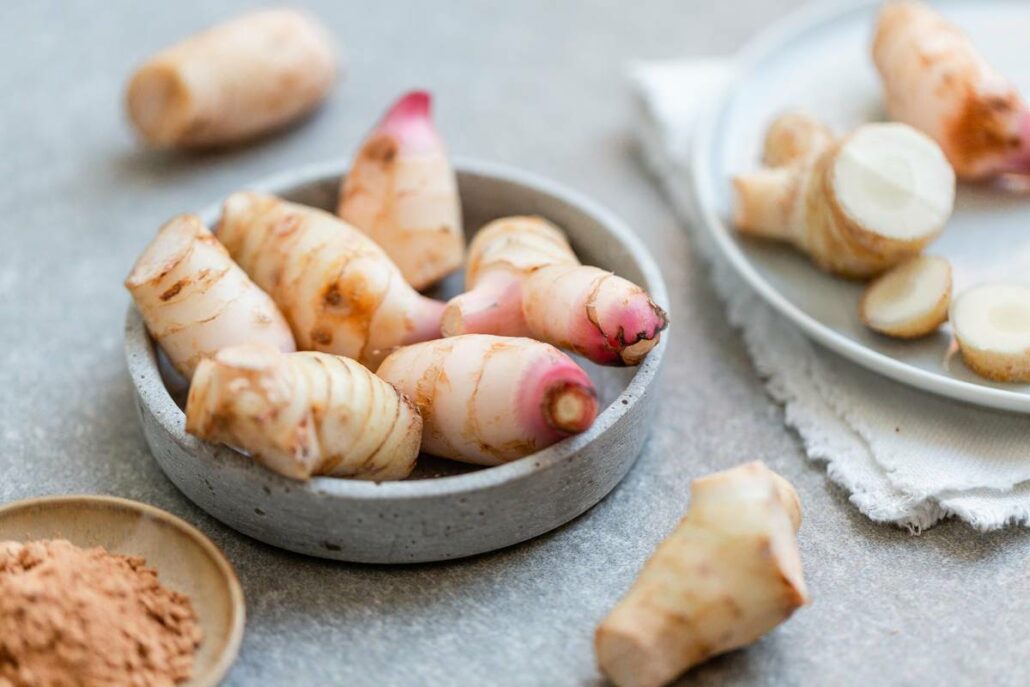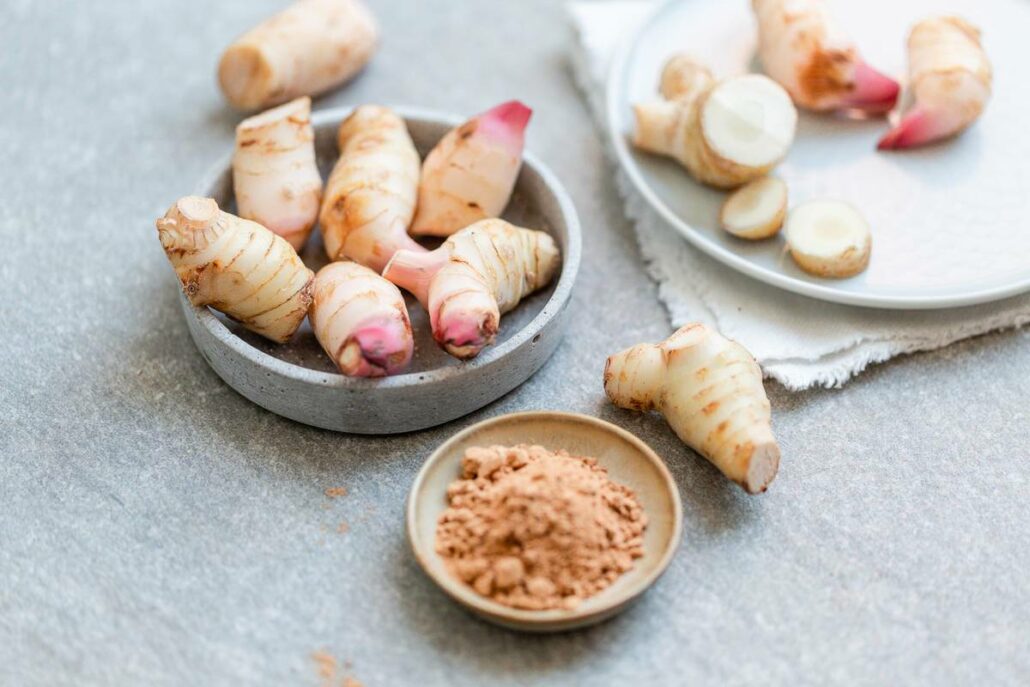Galangal
Spice, universal remedy & aphrodisiac
Although the galangal root looks similar to the well-known ginger, its aroma differs considerably from that of its tuberous relative. But what makes the spice so special and how is it actually used correctly in the kitchen?
From the Middle Ages to the Contemporary Times
Like ginger and turmeric, galangal belongs to the ginger family. It is mainly the rhizome, i.e. the rootstock of the galangal plant, that is used. Popularly known as Thai ginger or fever root, it is easy to guess where the root is grown: Although the plant originated in China, it is now widespread in most parts of Asia. Galangal is particularly popular in Thailand, but Vietnam, Cambodia, Laos, Malaysia and Indonesia are also considered cultivation areas for the plant.
Today, galangal root is also experiencing a small renaissance in western cuisine, because its importance in Europe goes back much further than one might expect. Already at the beginning of the Middle Ages, physicians and traders knew about the root’s efficacy and value, which is why it soon became one of the most important medicines of the era. But that is not all: in addition to its abilities as a medicine, galangal was also said to have aphrodisiac properties.
IIn the 12th century, the nun and scholar Hildegard von Bingen also discovered the root for herself and recorded numerous areas of effectiveness in her writings: Galangal was the remedy for recovery from heart problems, stomach and intestinal complaints or fever. However, only the root’s digestive and anti-inflammatory properties have actually been proven.
Galangal as a spice in the kitchen
In terms of taste, galangal root is only somewhat similar to ginger. Its aroma is described as peppery-hot, slightly bitter and pine resin-like. In cooking, the spice is said to support the taste of other components and thus to enrich the flavour of dishes. Because of its positive effect on stomach complaints, galangal is also often consumed as a tea in combination with lemon juice.
For cooking, it is mainly used in Southeast Asia, but also in southern Chinese cuisine. Occasionally, the root is also found as a component in the Chinese five-spice powder. However, it is primarily Thai cuisine that is known for its use of galangal, where it is considered a basic ingredient for many curry pastes, as it harmonises excellently with coconut milk, among other things. The root is usually first peeled and then crushed for use in cooking, but it is also used as a powder. The fresh root is ground in a mortar for use in pastes, and it is sliced as an ingredient in soups such as tom kha and tom yam. Incidentally, the “kha” in the name of a dish always stands for galangal. Besides Thai soups and curries, galangal is also an essential ingredient in the Indonesian rice dish nasi goreng and Laos’ unofficial national dish larb.
You can learn more about the aphrodisiac root and how to use it in our cooking classes Thai Curries, Thai Streetfood, Thai Kitchen and Best of Currys.
If you want to read more about healing and healthy roots, read about ginger “The spicy all-rounder” and turmeric “Spice of life“.
Shop
Fish sauce
Currypastes & spice pastes










